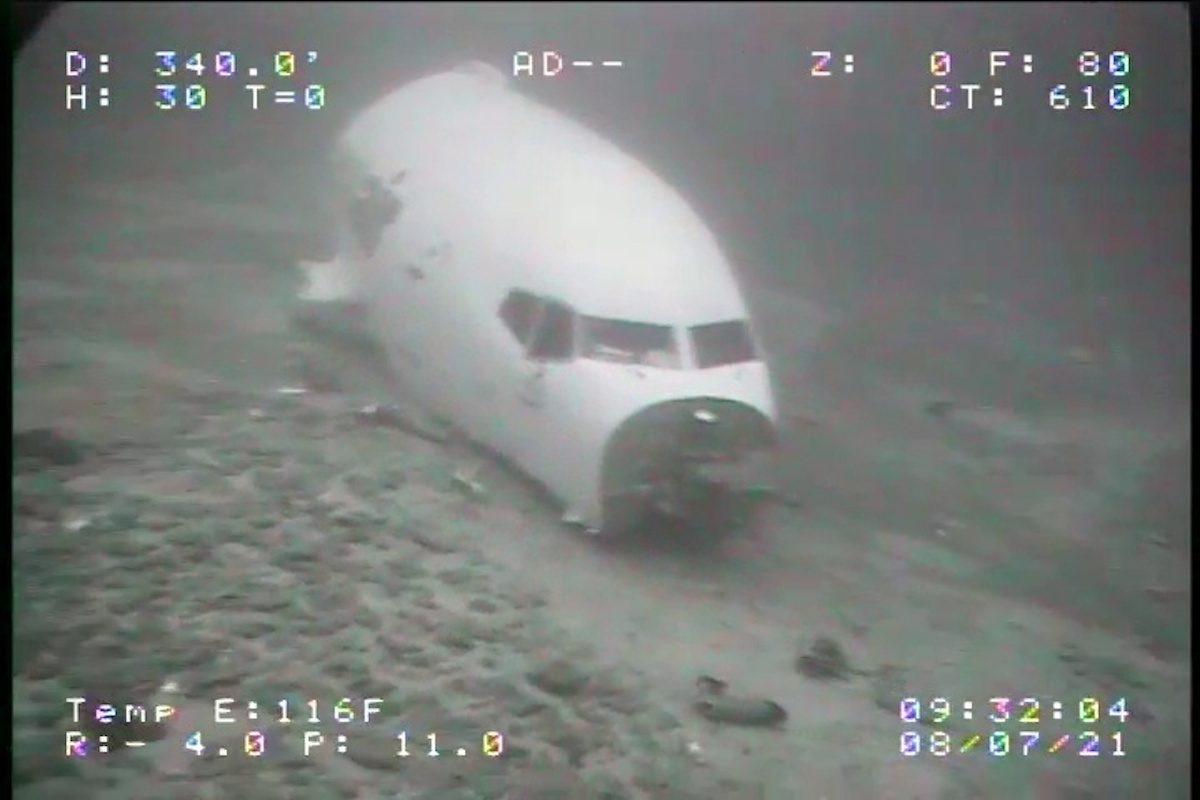Salvage Industry Showed Signs of Recovery in 2024
The International Salvage Union (ISU) has released its annual statistics for 2024, revealing a modest recovery in the salvage industry compared to past years with gross revenue for ISU members...

Investigators are set to begin the recovery operation for the wreckage of a Boeing 737 cargo jet that ditched into the waters off the Hawaiian island of Oahu this past summer.
The Boeing 737-200 reported anomalies in both engines and subsequently ditched into Mamala Bay shortly after takeoff from Daniel K. Inouye International Airport in Honolulu on July 2, 2021. The two pilots escaped from the wreckage and were rescued by the U.S. Coast Guard and the Honolulu Airport Aircraft Rescue Fire Fighting Unit. The aircraft was operated by Rhoades Aviation Inc, dba TransAir Flight 810.
TransAir’s insurance provider contracted with several companies to bring the wreckage and cargo to the surface. The wreck recovery operation will involve Eclipse Group’s survey and ROV support vessel, Bold Horizon, and Curtain Maritime’s derrick barge Salte Verde, which is equipped with Manitowoc 4600 S-3 crane. The barge will be towed to Hawaii from the U.S. West Coast by the company’s tug Shirley C. Several NTSB investigators will be aboard the Bold Horizon to coordinate the recovery effort.
“The wreckage of TransAir flight 810 contains important investigative information, including that captured by the flight data recorder and the cockpit voice recorder,” said NTSB Chair Jennifer L. Homendy. “Having access to the recorders, the engines and other components will be critical to understanding not only how this accident occurred, but how future accidents might be prevented.”
The jet’s fuselage broke into two pieces: the aft section with the wings and tail attached, and the forward section that includes the cockpit. Both engines separated from the wings at impact. All the wreckage is on an ocean shelf at a depth ranging from 350 to 450 feet. The site is about two miles from Ewa Beach in Honolulu.
Although there was an initial underwater survey done shortly after the ditching to confirm the location and disposition of the wreckage, the team will conduct another survey with the ROVs to determine if there have been any changes to the orientation of the wreckage. Following the survey, the ROVs will be used to rig each of the engines and fuselage sections and brought to the surface.
The flight data recorder and cockpit voice recorder are located in the aft fuselage of the airplane and will be recovered after that section is brought to the surface. Afterwards, the devices will sent NTSB Recorder Laboratory in Washington, D.C., where they will be downloaded for analysis.
NTSB investigators will also document the wreckage in Honolulu before the engines and other selected components are crated and shipped to facilities on the U.S. mainland for further examination and testing.
The entire recovery operation is expected to take 10 to 14 days, depending on the weather and other factors.

Sign up for gCaptain’s newsletter and never miss an update

Subscribe to gCaptain Daily and stay informed with the latest global maritime and offshore news


Stay informed with the latest maritime and offshore news, delivered daily straight to your inbox
Essential news coupled with the finest maritime content sourced from across the globe.
Sign Up